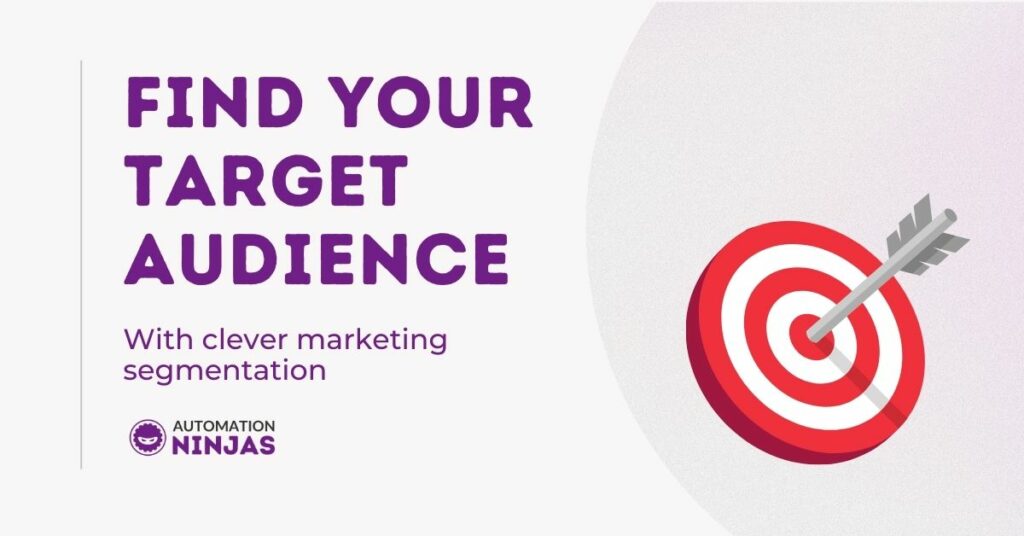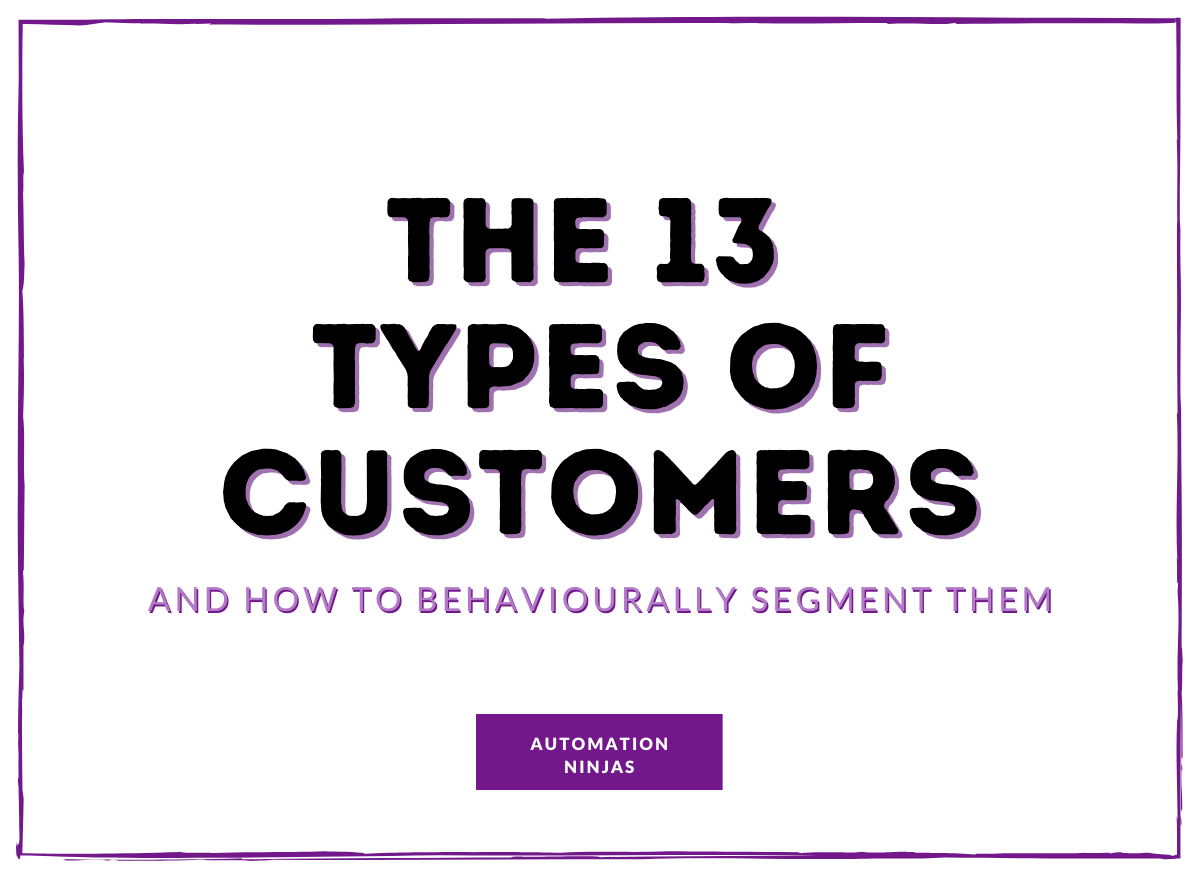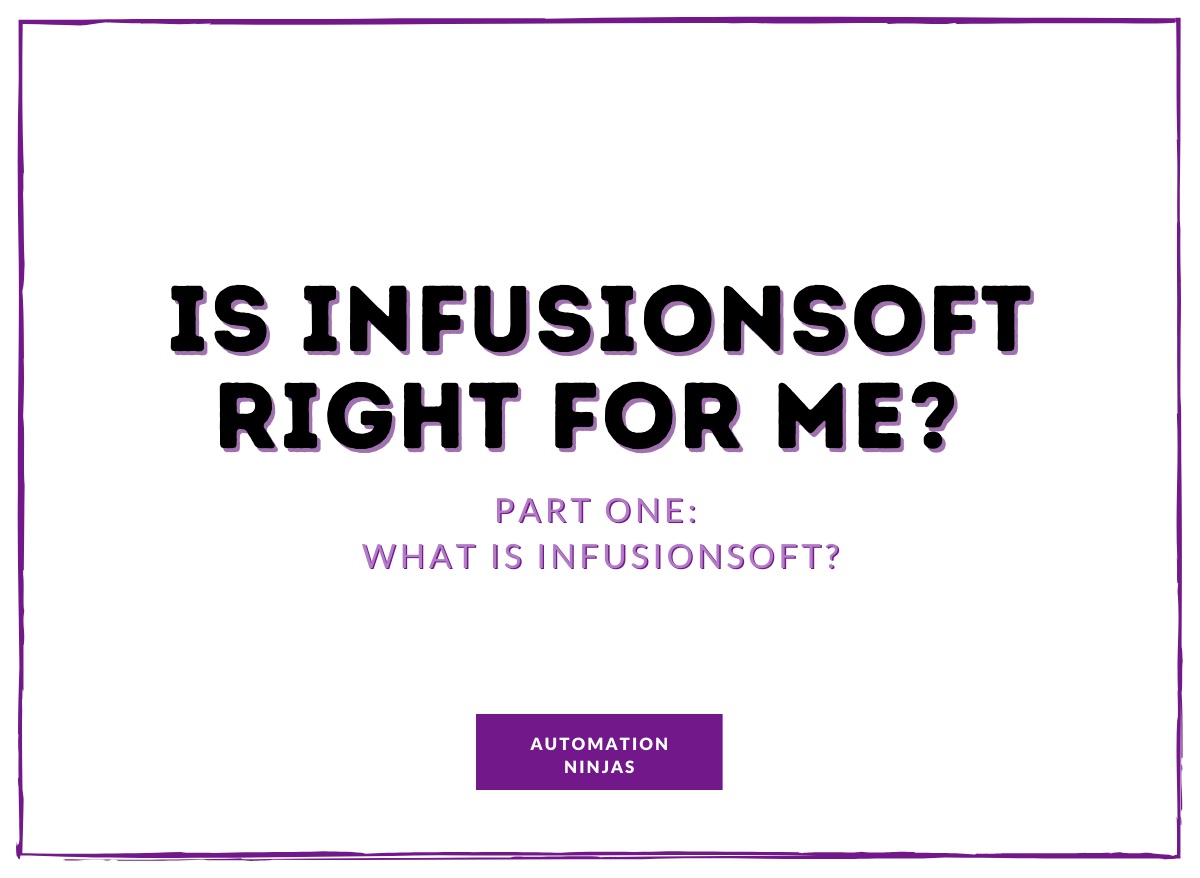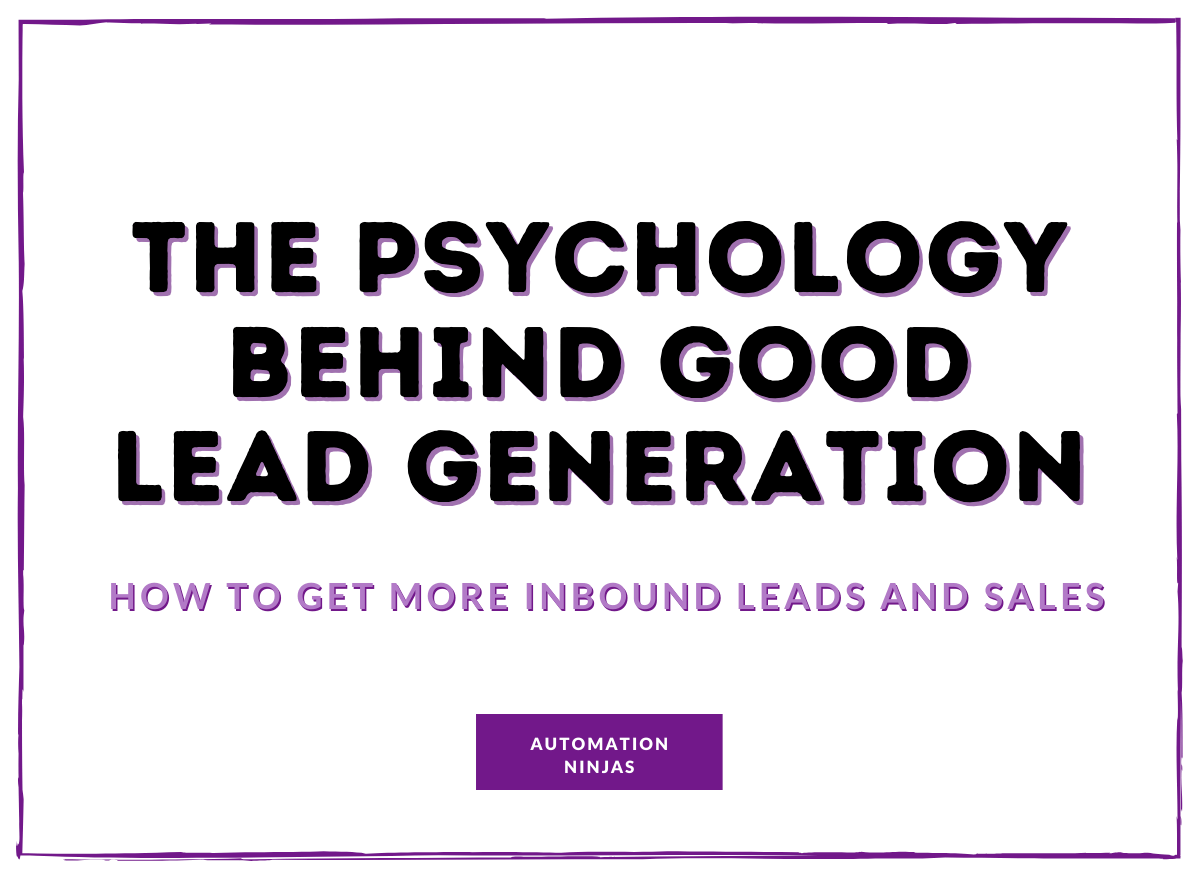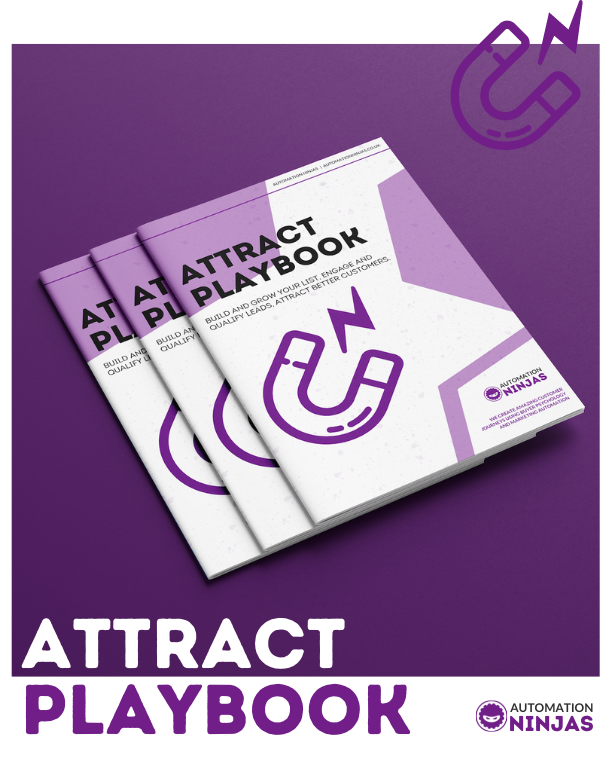How marketing automation can help you define your target audience, and create your marketing segmentation
The easiest way to not sell any of your products or services is to assume that it’s for everybody. Your marketing needs to speak to the needs or wants of a specific group of people that are the best fit for your product - your Target Audience
Knowing who they are and how to reach them is vital to ensure your marketing is going to reach the people that will buy from you.
There may be a bunch of different reasons why you’re not making the sales you need, or getting the email open rates you would like, and not knowing your target audience is a big one.
Learn how to use Marketing Automation to help you find your target audience, segment them as they join your list, and also build that profile as they interact with your content.
Why do I need a target audience?

"The differentiator seeks to secure a layer of the market cake, whereas one who employs market segmentation strives to secure one or more wedge-shaped pieces." - Wendell R. Smith
Targeting. A phrase you’ve heard all over the place, everyone knows about it, but is often not implemented.
When you send an email, you have a choice - You can send it to your whole list, or you can send a personalised email that speaks to the interest of a particular target audience.
The more targeted the communication, the more likely your audience is to stick around and keep opening emails, and buying what you want to sell them.
Your content strategy will be based on your target audience. We never write a piece of content that is not designed to reach our target audience, and it’s designed to actually help, rather than just sell something.
Finding your target audience - Where are your customers hiding?

They’re out there, in plain sight, but they’re not landing on your doorstep - Why not?
I’m not going to go into detail on the ‘content’ of your content, but your first port of call when looking at what you put out there is whether it's all about you.
If it’s all about you, then your customers won’t feel it’s about them.
If your website just lists off the things you sell, or the services you offer, and all the reasons that you’re great/better than the competition, it’s all you.
Your customers need to arrive on your content, and know it’s about them. Whether it be your website, blogs posts, adverts, leaflets - Anything you put out there that will get in front of people. Make it personal
Personalisation is huge in marketing now, people will jump ship in a split second if your content doesn’t shout ‘This is exactly what I need’ to the people that you would like to attract. Think of Facebook and Netflix here, it’s all based around what it knows you’re interested in. Sometimes Netflix shows you some downright weird stuff, but it’s probably just testing new things on you to see if it can add you to another segment.
Our content is directed at business owners and marketing managers. Our prime segments are E-Commerce, SAAS and B2B service based companies.
We know our content serves many other demographics, but we work with those groups specifically to grow businesses. We know that some people just want the information and want to do it themselves, that’s fine. We’re here if you need us to help get it done faster. We will never turn down a request for help if we know we can help, from a company whose values we parallel, and people we have a rapport with.
If you’re a business owner, we know that you are probably wearing too many hats, juggling too many roles, want to increase your sales, want to increase your email list, and want that email list to open and click more emails. Oh, and you want to keep customers for longer and get great reviews and testimonials. And you probably need a holiday. We don’t do holidays, but we might be able to get you the time to take one.
There are over 4 million limited companies in the UK. I’m pretty confident that we can help 90% of them with their customer journey and marketing automation, but if we try to target all of them, our information will have to be so generic that it’s not going to stand out against all the other generic information and services out there.
It all starts with your marketing segmentation. If your content is going to be more about them, you need to know who, and where they are. Gather the data, and then process and analyse that data to build your personas.
Building a buyer persona is an exercise that we usually go through at the start of a client project. Many companies already have one, or several personas for different products or services when they speak to us. If not, we help build them out with a series of questions, resources and templates.
There is also a lot of data hiding in the marketing platforms that businesses are already using. Use that data to create segments from your existing audience, and then go out and look for more people that are ideal for your business.
Give me some examples of segmentation in marketing
Initial interest - Subject A, subject B, Signed up for newsletter
Demographics - Where they are, occupation, position in company, where they hang out
List Health - Engaged, unengaged, unsubscribed, old and new subscribers
Activity in your CRM - The emails that they have opened, ones they have clicked
Activity - What they have downloaded, which webinars they watched, what website pages they have hit
Customer data - What they bought, when their last sale was, how much they have spent in total (CLV)
Lead sources - Where your customers are coming from
If you have several lead magnets on your site, get a head start by making sure that you segment people that sign up for a lead magnet.
Tag your Lead Magnet - Label the people that download or take your lead magnet so you know what they came to you for. There are many different ways to do this depending on the software that you use, but in Infusionsoft, you might add a segmentation tag in a sequence as soon as a webform is submitted.
Record the Lead Source - Label the channel that they came in from. Any links that point to your lead would be better if they were dressed in UTM parameters. Make sure that your automation platform’s tracking code is on all the pages on your website.
Follow up with them afterwards - and if they don’t engage with that follow up, send something different.
Your marketing software should have a way to segment people that come in via different entry points in your software.
In Infusionsoft, it’s easy to create a webform, embed that webform on your website, or in your popup, and then in the following sequence, apply a tag that will tell you in the future what the contact asked for, and their interest segment.
You then set up a saved search for all those people that have that tag on their record, and you have a segment.
Don’t stop there though, you can then look at that list, and save another version of it that excludes people that have bought the end product that the lead magnet is warming people up to. Then you’re not trying to sell what’s already been sold. Using other tags, you can exclude people that are in another sales campaign, or have become unengaged with that type of content.
Other platforms may have different methods - Maybe yours just adds them to a ‘list’
In the case of lead sources - Your CRM or Marketing platform will most likely give you some tracking code to put on all your web pages, usually in the same place that your Google analytics code will go.
This will give you the ability to see the browsing history of your contacts within your website, landing page, sign up forms - Wherever you can put the tracking code. This should also give you an indication of where they came from - Whether it’s Linked In, Facebook, Twitter or Organic etc.
More advanced systems will have a way to incorporate the information that is contained in tracked links.
Tracked links are links that have a normal link with UTM (Urchin Tracking Module) parameters appended to the end of them. They are normally made up of three to five elements:
Source - Specific referrer of the traffic - eg: newsletter, Google, LinkedIn
Medium - The channel that was used - Eg: email, CPC, Social
Campaign - The particular promotion being run - Christmas socks, welcome series, membership upsell
Term - Usually used in CPC for the search term being targeted eg:
Content - To differentiate ad sets, or variations on the same campaign eg: Blue button, forest image
This is very valuable for reporting, but is also good for segmenting your audience for marketing.
We usually use this page to build our links: https://ga-dev-tools.appspot.com/campaign-url-builder/
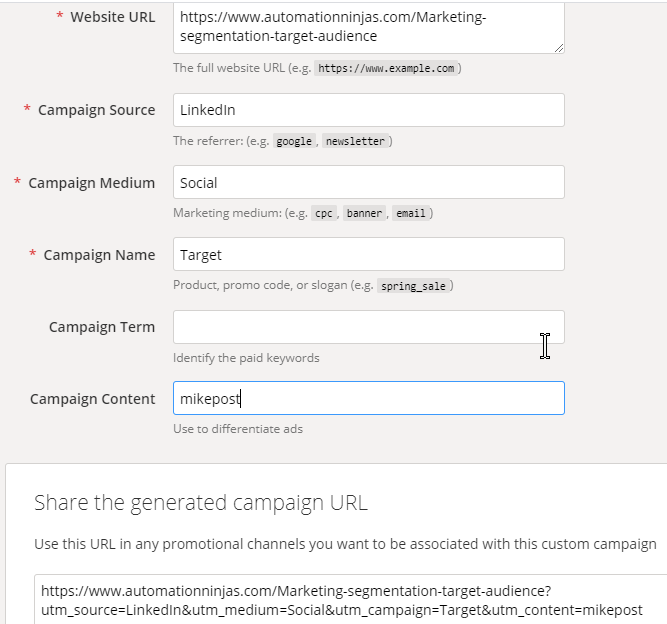
This is the actual link that I will use to link to this post, when I announce my latest blog on my Linked In profile.
https://www.automationninjas.com/marketing-segmentation-target-audience?utm_source=LinkedIn&utm_medium=Social&utm_campaign=Target&utm_content=mikepost
Look them up
If you’re in the B2B sphere, find the profiles of your ideal customers on Linked In and Facebook, and look up company profiles. See if they share common characteristics. Find out what their job role is, their responsibilities, what they need to do their job, and what their goals and challenges are.
Facebook and Linked In also both have ad managers. When you have enough information on your existing customers, you can try and match them up with the filters in the ad builders - The audience selection will tell you how many people you are likely to reach.
This is not limited to just B2B either. In the case of a sneaker company, you can get a list of your best customers - Those that have been with you the longest, or spent the most over time - and see if you can find them on social media. It’s all public information, and using it to find out what they like, and where they hang out will only help you serve your audience better.
Asking your existing target market
You probably already know your best customers or clients, recognise them by name, and love it when they buy from you, or appear in your calendar for the monthly call. Surveys are your friend here.
Learn what you can about your ideal existing customers and don’t be afraid to survey them for more information.
The answers they give you will help you build a profile for your ideal customer.
A few examples on what to ask your target audience
- Demographics, like Age range, gender, job roles, location, (B2B - do they sell online, what industry, tools used), social platforms
- Spending habits - What devices they use to buy - Mobile, Tablet, Desktop; how much they spend on X per month
- Psychographics - Values, fears, goals, problems, motivation to buy, social groups, peers, idols, routines, events they attend
There is always a way to link your survey to your CRM. If you already have a CRM/Marketing Automation platform, it’s worth doing a little research to see if there is a survey tool out there that integrates directly with your CRM, or there may be a simple Zapier-type tool to link them for you.
We use Typeform and Surveymonkey, and we link them to our Infusionsoft* CRM using PlusThis*
Where to store the information - Your CRM
Most CRM’s have custom fields that you can save information to, or a tagging system that will allow you to add segmentation information to each contact, giving you the ability to filter your database by that information to create your marketing lists.
Create your lists thinking about how you will market to them differently. A separate list is no good to you unless you have a plan to use it. I have seen CRM’s with so many lists that it’s confusing knowing which list is the one to use for a particular marketing piece. Make sure you name your list very clearly, and it often helps to put a date in the list name so you know how relevant it is.
Infusionsoft* has a very powerful set of tools, allowing many levels of marketing segmentation. There is no real limit to the ability to create lists with many criteria for super sharp targeting.
Build a community
We did recently, and it’s giving us huge insight into our customer needs, and helps us to build on the picture of our target audience. We had an idea already, but it’s an ever evolving thing. Marketing is never a static process, it’s organic, and will need updating at least every 6 months.
Summing up:
- You need a target audience to define your marketing segmentation - More targeted = more effective
- Build your buyer persona or avatar - Who you think is the most likely to buy what you are selling
- Use the data that you already have, analyse your CRM, and create segments from those
- Look your best customers up
- Ask your existing customers - Survey
- Store the information in your CRM
- Use that to create your marketing segmentation
Defining and finding your target audience is all part of your ‘Attract’ Strategy.
Learn more about attracting great customers by downloading our Attract Playbook using this lovely little orange button right here.
Disclaimer:
*We are Infusionsoft and PlusThis partners, so these are affiliate links!

